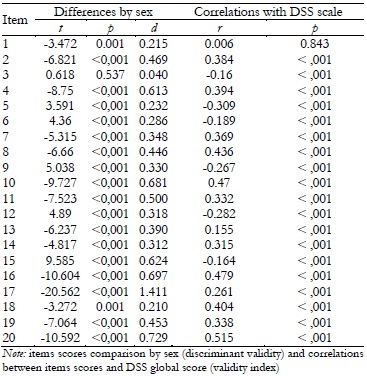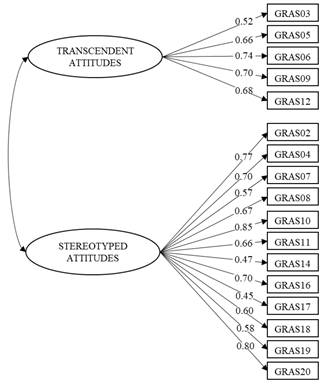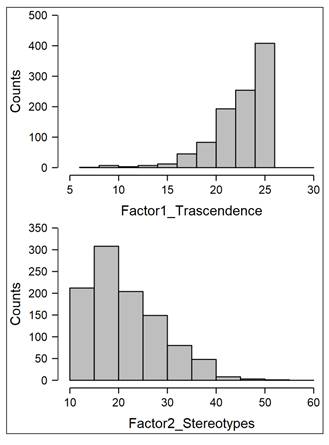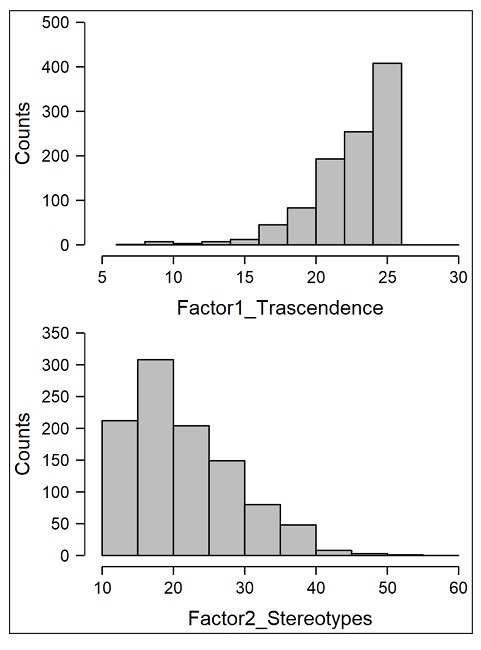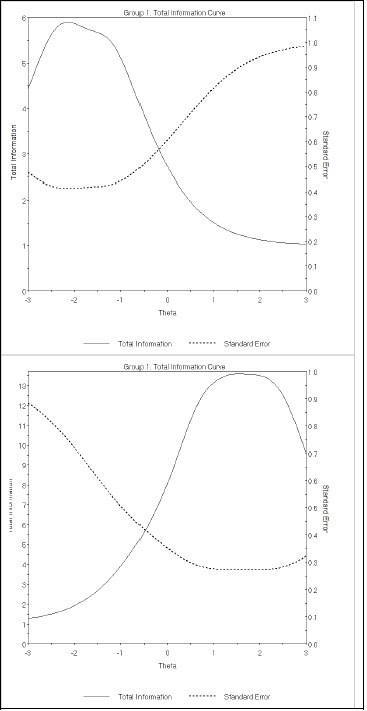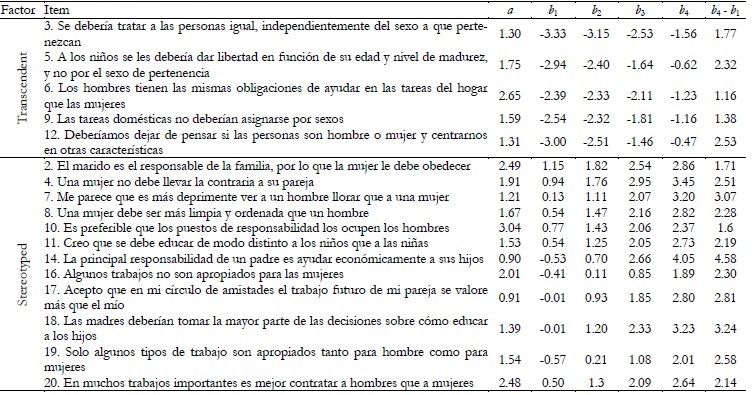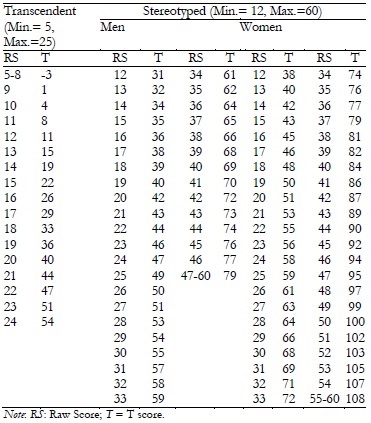Introduction
The literature describes an exponential increase in egalitarian attitudes starting in the 1970s (Blofield & Martínez, 2015; Cotter et al., 2011; Pedulla & Thebaud, 2015; Pepin & Cotter, 2018; Scarborough et al., 2018; Walter, 2018; Yopo, 2017). Unfortunately, we are experiencing a slow-down in change, and the revolution in gender roles is incomplete. Inequality persists in young people. Recent studies relate this traditional mentality with, for example, dating violence (Bringas-Molleda et al., 2017; Carrascosa et al., 2019; García-Cueto et al., 2015; Gracia-Leiva et al., 2019: Martínez-Gómez et al., 2021; Pérez et al., 2020), intimate partner violence attitude (Evcili & Daglar, 2021), sexual double standard (Kim et al., 2019; Martínez-Gómez et al., 2021), or the agreement with conservative policies and the hierarchy and inequality in society (Bugay et al., 2019). Furthermore, in both western and non-western societies, men have a more traditional mentality than women (Blázquez-Alonso et al., 2019; Bugay et al., 2019; Halimi et al., 2016).
Cotter, Hermsen, and Vaneman (2011) argue that we live in an emergent cultural frame called egalitarian essentialism. We accept the freedom of choice for women, but we also believe that they have special care and upbringing skills. Thus, gender equality evolves more slowly for the private sphere (Scarborough et al., 2018). More, in NorthAmerican longitudinal study, Pepin and Cotter (2018) found a recoil in the conventional ideology of gender in the family and stagnation of egalitarianism in the public sphere since the 1990s. Other authors argue that this situation results from a complex process: gender equality has become a new social norm, but this norm has not been accompanied by social structure and regularisation based on equity. This incongruence limits individuals' capacity to create equality relations (Blázquez-Alonso et al., 2019; Franceschet et al., 2015; Halimi et al., 2017; Pedulla & Thebaud, 2015; Yopo, 2017). The Triangle Theory of Violence (Galtung, 2016) indicates that offering different life opportunities according to sex facilitates discriminatory attitudes. Indeed, Lomazzi and Seddig (2020) conducted a cross-cultural study in which they found that countries with more progressive gender attitudes also presented more egalitarian social values.
Latin American countries have experienced progress in their social structures. Latin America is in the vanguard internationally in female representation in the legislative power. These changes favor initiatives on equity being approved and encourage the construction of public agendas on gender (Rodríguez & Madera, 2015). However, although Latin American women have gained greater access to political and employee participation in recent years, this access has been subjected to maternalist structural and cultural restrictions prioritizing the traditional ideal of the woman (Franceschet et al., 2015; Hermans et al., 2016). Similar circumstances surround public policies for reconciling family life and employment (Blofield & Martínez, 2015; Rodríguez & Madera, 2015).
Chile is among the Latin American countries with the most favorable conditions for developing equity measures (Blofield & Martínez, 2015). However, inequality persists (Guzmán et al., 2012; Mora & Blanco, 2017; Ugarte et al., 2015). For example, the World Gender Gap Index 2018, which compares employment participation and economic empowerment in 149 countries, places Chile in Economic Participation and Opportunities in the number 120 (World Economic Forum, 2018). This index measures participation in the labor force, equal salaries for similar work, estimated earnings, and the presence of women in roles such as legislators, high-level employees, board members, and professional and technical employees.
We are currently facing a different sociocultural scenario than at the end of the last century. This setting is more egalitarian and equitable but still with important limitations at the individual and structural levels. These changes should be considered for research and measurement of gender role attitudes.
The crisis in the measurement of gender role attitudes
Many of the measurement instruments currently in use are based on the traditional model of gender (Davis & Greenstein, 2009). This strategy is a significant obstacle to discovering reality, contextualized in the current sociocultural scenario (Walter, 2018).
Although we need an instrument that remains constant if we are to measure change over time, we risk that the measurement will lose functional equivalence if it does not represent social changes (Smith, 2005). Items that only represent traditional stereotypes are outdated. Consequently, they lose discriminative power (Halimi et al., 2017); moreover, they do not measure a possible egalitarian attitude in the individual, but only the acceptance or rejection of these stereotypes (Constantin & Voicu, 2014; Walter, 2018). Baber and Tucker (2006) likewise criticized the reduced ability of instruments to capture contemporary ways of thinking. Other criticisms are the habitual dichotomy of these items in which men and women are in opposition; the scarcity of instruments to evaluate these attitudes in young people and adolescents even though this is a crucial period in their lives; and a limitation in the gender roles explored, which tend to be questioned for only one gender (Baber & Tucker, 2006; Bringas-Molleda et al., 2017; Constantin & Voicu, 2014; García-Cueto et al., 2015; Halimi et al., 2017).
Few instruments have been adapted and validated for use in Latin America. Besides, most of them are of Anglo-Saxon origin, were not created or adjusted in the current sociocultural scenario, or present some of the critical points indicated above. Some are: the Attitudes toward Women Scale for Adolescents (AWSA) adapted with Peruvian and Ecuadorian adolescents (Jaruseviciene et al., 2014); the International social survey program scale of gender role attitudes and the World Values Survey (WVS) scale of gender role attitudes (Constantin & Voicu, 2014). The first, validated in Brazil, Chile, and Mexico, and the second in Argentina, Brazil, Chile, Mexico, Peru, and Uruguay; the Ambivalent Sexism Inventory (ASI), with evidence of validity in Chile, Mexico, Argentina, Colombia, Cuba, Peru, and Brazil in university students (Formiga et al., 2002; Glick et al., 2004; León-Ramírez & Pérez, 2013; Mladinic et al., 1998); and the Ambivalence Toward Men Inventory (AMI), with evidence of validity in university students of Argentinian, Colombian, Cuban, Mexican and Peruvian origin (Glick et al., 2004).
Some authors have tried to overcome these limitations. Baber and Tucker (2006) drafted and validated the Social Roles Questionnaire (SRQ) in a sample of English university students. The SRQ includes items for evaluating subtle and concealed contemporary attitudes. It also contains items not dichotomized; they suggest no reason why these roles should be linked to gender. These items allow transcendent attitudes to be captured, i.e., attitudes to roles that transcend gender. These attitudes result from the development of high ego levels that promote thought outside the ideas proposed by society (Baber & Tucker, 2006).
More recently, based on the SRQ and other scales, García-Cueto et al. (2015) developed the Gender Role Attitudes Scale (GRAS) with a young Spanish population. The authors intended to obtain an instrument that included measurements of both stereotyped and transcendent attitudes, considering gender roles in the family, social, and work relations. Some items allude to male roles, others to female roles, and others to a stereotypical vision of both genders. The work of Bringas-Molleda et al. (2017) offered evidence of the validity and reliability of this scale in a sample of young Mexicans and Argentinians. Due to the above, we believe that GRAS could be an appropriate scale for evaluating GRA in young people in Chile's current sociocultural scenario. Consequently, the research question is: does the GRAS have adequate psychometric properties to be used with Chilean students?
The object of this study is to adapt GRAS and provide evidence of its validity in Chilean students. To achieve this aim, we are going to: do an analysis of the items, obtain the factorial structure of the scale and its convergence with a measure of a sexual double standard; estimate its internal consistency; determine the ceiling and floor effects; assess its accuracy; identify the attitudes which are easiest or most difficult to modify; draw up interpretation norms differentiated by sex for the GRAS.
Method
Participants
A sample of 1013 university students of central and southern Chile was collected by non-probabilistic convenience sampling. The 44.2% (n = 448) were matriculated in Education, Social Sciences and Humanities courses and 30.9% (n = 313) in Medicine. The 60% (n = 608) were female and 40% (n = 405) male and the 46.8% (n = 473) had partner when respond the questionnaire. Average age 20.5 years (women Mage = 20.5, SD = 1.77; men Mage = 20.6, SD = 1.93. Age range: 18 to 27 years. Of the participants who reported their religious identification (n = 793), 67.3% (n = 537) are Christian. 3.8% of the participants identify with an ethnic minority.
Measurements
The Gender Role Attitudes Scale (GRAS; García-Cueto et al., 2015). This scale, developed and validated with a Spanish population aged between 15 and 26 years, evaluates GRA through 20 items on a Likert-type scale of 5 response alternatives, where 1 means “totally disagree” and 5 “totally agree”. It has a unidimensional and bipolar structure (Cronbach's alpha value of .99): the highest scores indicate stereotyped attitudes, and the lowest indicate transcendent attitudes. The authors report that the instrument is more reliable in the central values of the total score distribution and that items about traditional family stereotypes represent the most easily-modifiable attitudes and social stereotypes the most difficult. Males have more traditional attitudes than females (García-Cueto et al., 2015)
In a Mexican and Argentinian university student sample, this instrument presented a bidimensional structure: one factor of stereotyped attitudes consisting of 14 items, and a second measuring transcendent attitudes composed of 6 items. The first factor obtained a Cronbach's Alpha coefficient of .85 for Argentina and .89 for Mexico; the second, .83 for Argentina and .94 for Mexico (Bringas-Molleda et al., 2017). Due to these results, we consider both factorial structures in the present study.
Furthermore, we applied the Double Standard Scale (DSS; Caron et al. 1993). It measures the agreement with a traditional perspective on sexual behavior. DSS has a unidimensional structure with ten items on a Likert-type scale of 5 response alternatives, where 1 means “totally agree” and 5 “totally disagree”. High scores mean high levels of double standards. In the sample of this study, the scale showed acceptable fit for the unidimensional structure: Root Mean Square Error of Approximation (RMSEA) = .078; Comparative Fit Index (CFI) = .975, and Tucker-Lewis Index (TLI) = .968. The internal consistency was good: Ordinal Alpha was 0.906, Standardized Cronbach's Alpha was 0.835, and McDonald's Omega was 0.916. An ad-hoc instrument collected sociodemographic variables such as sex, age, study career, ethnicity, or religious orientation.
Procedure
The students who decided to participate were given the study questionnaire in the classrooms after signing an informed consent form approved by the Scientific Ethics Committee of Universidad de La Frontera (Temuco, Chile).
Data analysis
First, we run an analysis of items. We analyzed each item's discriminative and predictive validity by comparing the scores by sex and correlating them with the DSS scale's global score. We used corrected item-total correlation to study item discrimination. Reliability estimates were calculated by three variants of the alpha coefficient for ordinal data. The normality of the scores was examined using the Kolmogorov-Smirnov (K-S) test.
Confirmatory Factor Analysis (CFA) was carried out comparing the original one-factor structure (García-Cueto et al., 2015) with the two -factors structure (Bringas-Molleda et al., 2017) to provide evidence of internal structure validity. We used a robust estimator due to the violation of the multivariate normality assumption. Specifically, the Means and Variance Adjusted Unweighted Least Squares (ULSMV) method on a polychoric matrix. We assessed the fit of the model data using RMSEA, CFI, and TLI. Optimum fit: CFI and TLI ≥ .95, and RMSEA < .05. Reasonable fit: CFI and TLI ≥ .90, and RMSEA < .08 (Kline 2005). Schwarz's Bayesian Information Criterion (BIC) was used to compare the models (lower value indicates a better fit). In order to demonstrate the instrument's external validity (convergent validity), we used the Spearman correlation coefficient (rs).
The ceiling effect, “the diminished utility of an assessment tool for distinguishing test takers at the high end of the ability, trait, or other attribute being measured” and the floor effect, “the diminished utility of an assessment tool for distinguishing test takers at the low end of the ability, trait, or other attribute being measured” (Cohen & Swerdlik 2018, p. 245), were studied by analysis of the distribution of the scores in the two factors.
We analyzed the data under the Item Response Theory's assumptions (IRT; Samejima Graduated Response Model). As García-Cueto et al. (2015) explain, the Samejima Graduated Response Model is:
a particular instance of the 2-parameter logistic model, which through the results offers: 1) information on test measurement accuracy for participant scores across all the latent continuous variables (θ) being studied using the test information function; 2) the discriminatory capacity of each item in the score calculation for each person in the variable (parameter a of the model); 3) the value of parameter b (or difficulty) indicates, for a given level of the variable measured, the likelihood of choosing a specific response category or a higher one. (p. 63)
Furthermore, the values obtained in this parameter of difficulty indicate which items of the questionnaire represent attitudes that are easiest or most difficult to modify. The lowest differences between b4 - b1 indicate the items representing the attitudes that are easiest to change, and higher values are associated with the most difficult. This value indicates the amount of effort that an intervention would have to make for someone to change their attitude, for example, to pass from agreeing to disagreeing with a sexist belief. The higher the value, the more intensive the effort.
Finally, after differential analysis by sex using the Mann-Whitney U statistic, both dimensions of the instrument were scaled using T scores (M = 50, SD = 10). The non-parametric effect size was calculated using the Probability of Superiority (PS) coefficient (Grissom and Kim 2012). The data was analyzed using the IBM SPSS 21.0, FACTOR 10.8.04, MPlus 7.11, JASP 0.10.2.0, and IRTPRO 4.2 statistics packages.
Results
Preliminary analyses
The researchers conducted a pilot study with a group of 50 Chilean university students. In items 6 and 8, the words chicos and chicas (boys and girls) were replaced by hombres and mujeres (men and women); in item 7, the word lamentable (pathetic) was replaced by deprimente (depressing); and the wording of item 15 was changed so those male participants could also identify with it.
First, we checked the discriminative validity and predictive validity for each item (validity index) (see Table 1). Almost all items discriminated and predicted significantly, only item 3 did not differentiate between sexes, and item 1 did not correlate with the DSS scale's global score.
The item discrimination index (item-total correlation) was lower than 0.25 for items 1, 3, 13, and 15 in the one-factor model and for items 1, 13, and 15 in the two-factor model (see Table 2); so these items were eliminated from the analyses. From this point on, we worked with the 16 items in the one-factor model and the 17 items in the two-factor model (transcendent attitudes factor, five items; and stereotyped attitudes factor, 12 items).
The Kolmogorov-Smirnov test indicated no normal distribution of the univariate data, i.e., neither for the item scores nor for the scale scores.
Factorial structure
For one-factor model, the factor loadings ranged between .45 and .85 (see Table 2) and the fit indices were: χ 2 /df = 5.82, RMSEA = .069 (90% CI = .064 .074), CFI = .941, TLI = .932, RMSR = .066 and BIC = 719.071.
For two-factor model, the loadings were between .523 and .741 for the transcendent attitudes factor and between .450 and .852 for the stereotyped attitudes factor (see Table 2). The fit indices were: χ 2 /df = 3.89, RMSEA = .053 (90% CI = .048 .059), CFI = .958, TLI = .951, RMSR = .049 and BIC = 692.312. The correlation between the two factors was -.773. In view of the better fit indices of the bifactorial model, we opted for this structure (see Figure 1).
Table 2: Item descriptive statistics, Item-Total Correlation (ITC), Factor loadings, and Ordinal Alpha if item deleted for the items.
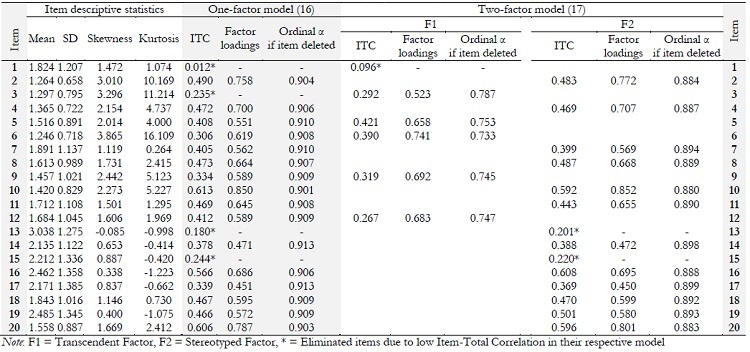
Internal consistency
The internal consistency of factor 1 was .793 by the Ordinal Alfa, .797 by McDonald's Omega, and .794 by the Standardized Cronbach's Alpha. For factor 2, we obtained coefficients with equally good values, Ordinal Alfa = .898, McDonald's Omega = .901, and Standardized Cronbach's Alpha = .899. Ordinal Alpha if the item for each model is eliminated in Table 2.
Convergent validity
The total DSS score, showed statically significant correlation (p < .01) both with the transcendental attitudes factor (r = -.423, median effect size), and with the stereotyped attitudes factor (r = .634, large effect size).
Ceiling effect and Floor effect
We then totaled the scores of the items of each factor to obtain a total score and studied the two distributions. The transcendent attitudes factor has a ceiling effect: most participants are found in high levels of transcendent attitudes, producing asymmetric distribution. Something similar occurred in the stereotyped attitudes factor but in the initial segment of the distribution, creating a floor effect (see Figure 2).
Accuracy of the measurement
Figure 3 presents the Test Information Function (TIF) for both dimensions of the construct. The scores in the variable studied are represented on the x-axis. The information function is the continuous curve, and the typical measurement error is the dotted line. The TIF indicates that the transcendent attitudes subscale measures subjects with low values in this scale more accurately, i.e., the scores representing less transcendent attitudes, since they present more information and less measurement error in this zone of the attribute. For the scores on the stereotyped attitudes subscale, the scale is more accurate for individuals with high values, i.e., those with more stereotyped attitudes (see Figure 3).
Difficulty of the items
Three of the five items that represent the most challenging ideas are work-related stereotypes. Item 14 was the most difficult. Three of the five items that represent the most easily modifiable ideas represent family stereotypes. Item 6 was the easiest. Four of the seven ideas with intermediate values represent social stereotypes (see Table 3).
Norms
Statistically significant differences between men and women mean ranks (MR) were found in transcendent attitudes (Z = -7.031, p < .001); females had more transcendent attitudes (MR = 557.8, Md = 24, SD = 2.590) than males (MR = 430.7, Md = 23, SD = 2.962). The non-parametric effect size of this difference by the Probability of Superiority (PS) was 0.374, equivalent to Cohen's d value of 0.436, which means a small magnitude. Significant differences were also found in stereotyped attitudes (Z = -14.736, p < .001), with men showing more stereotyped attitudes (MR = 672.8, Md = 25, SD = 7.340) than women (MR = 396.6, Md =18, SD = 6.150). The effect size of this difference was PS = 0.227, equivalent to Cohen's d value of 1.043, which represents a large magnitude. The effect size found justifies the creation of sex-differentiated norms in the dimension of stereotyped attitudes. Table 4 shows the raw scores (RS) and their equivalent in T scores (M = 50, SD = 10).
Discussion
We present an adaptation of the GRAS in a sample of Chilean university students and evidence on the validity of its factorial structure, external validity, internal consistency, ceiling and floor effects, and the accuracy of the measurement. We also contribute to knowledge on the nature of attitudes of this type in the new generation, analyzing ideas on gender roles with a profile of which are easiest or most difficult to modify. Finally, we present general norms for interpretation in the transcendent factor and differentiated by sex in the stereotyped attitudes subscale.
We obtained a bifactorial scale (stereotyped attitudes and transcendent attitudes) coinciding with the Argentinian and Mexican versions (Bringas-Molleda et al., 2017) of 17 items, with suitable internal consistency. Consequently, the GRAS scale for use in Chile assesses two constructs (transcendent attitudes and stereotyped attitudes) independently, instead of a single global score, as in the case of the Spanish version. The factors showed convergent validity with the DSS scale (Kim et al., 2019). Although GRAS was recently created, unlike other instruments validated in Chile (Constantin & Voicu, 2014; Mladinic et al., 1998), it has a ceiling effect for the transcendent attitudes factor and floor effect for the stereotyped attitudes factor (Cohen & Swerdlik, 2018). These effects may be indicative of a lack of representation of controversial contemporary stereotypes and an overrepresentation of traditional stereotypes rejected by the majority of the current society. Furthermore, this may imply a higher sensitivity to the effects of social desirability. A reflection of these results is the high levels of kurtosis on items 2, 3, and 6. Nevertheless, these items can be essential to locate participants with more extreme stereotyped attitudes: they accept stereotypes with which most disagree.
A notable advantage of this instrument over others is that the stereotyped attitudes factor contemplates views that are not just for men or just for women, but for both. Also, GRAS allows measurement not only of the acceptance or rejection of gender stereotypes (Constantin & Voicu, 2014; Walter, 2018) but also the development of transcendent attitudes (Baber & Tucker, 2006), which are not perceived by the traditional instruments adapted and validated in Latin America (Constantin & Voicu, 2014; Glick et al., 2004), except the AWSA (Jaruseviciene et al., 2014). GRAS permits global, inversely correlated analysis of stereotyped and transcendent attitudes, facilitating a complete view of GRA. Separate measurement of the two constructs would even allow for both stereotyped and transcendent attitudes in the same person. Finally, we would add that the scale was more accurate for low values in the transcendent factor and high values in the stereotyped attitudes factor, unlike the Spanish version (García-Cueto et al., 2015). Consequently, this adaptation identifies the less transcendent and more stereotyped attitudes more accurately.
Attitudes to family stereotypes are more susceptible to change; attitudes to social stereotypes present a moderate degree of difficulty; attitudes towards work-related stereotypes, a high degree. These results support other studies that point to different cultural meanings for the public and private spheres. The life plans, opinions, and values of people can vary for each sphere, so they must be analyzed and intervened separately. On the other hand, these results are contrary to the cultural framework egalitarian essentialism, identified and defined in the North American population, and support other authors who put the focus of the problem on the social structure (Blofield & Martínez, 2015; Bugay et al., 2019; Cotter et al., 2011; Franceschet et al., 2015; Galtung, 2016; García-Cueto et al., 2015; Hermans et al., 2016; Pedulla & Thebaud 2015; Pepin & Cotter, 2018; Rodríguez & Madera, 2015; Scarborough et al., 2018).
This contradictory result may be due to the characteristics of the Chilean sociocultural scenario. Yopo (2016) reports a delay in the transition to motherhood due to a new cultural norm in Chile: Women must achieve functional financial status before becoming mothers. Likewise, marriage is becoming less frequent. The life course of Chilean women is increasingly individualized, although this process is conditioned to the social structure (educational level and the profession) (Gómez-Urrutia & Royo, 2016; Yopo, 2017). Besides, Chilean women have less control capacity in the material and political area, lower wages, and fewer labor opportunities (Franceschet et al., 2015; Guzmán et al., 2012; Hermans et al., 2016; Mora & Blanco 2017; Ugarte et al., 2015). According to the 2018 World Gender Gap Index, Chile is in position 120 in economic participation and opportunities for women, far from the United States, in position 20 (World Economic Forum, 2018).
Finally, the results of this work add more evidence to the abundant literature establishing that men are significantly more traditional (Blázquez-Alonso et al., 2019; Bugay et al., 2019; Halimi et al., 2016). In this context, it is striking that the first and third most difficult ideas to modify are the only which refer exclusively to stereotypes of male. Thus, these results seem to indicate that progress towards equality needs not only a social structure based on equity but also the deconstruction of masculinities (Davis & Greenstein, 2009; Glick et al., 2004).
A limitation is that the norm is restricted to the sociodemographic characteristics of the sample. Secondly, the administration of only one measure of GRA involves monomethod bias, which affects the possibility of being entirely sure if we measure the construct. This is, in part, addressed by the significant correlations with related constructs. Thirdly, as GRAS and the rest of the scales are self-reporting instruments, they are subject to social desirability.
To conclude, GRAS scores are reliable, and the instrument has evidence of validity to measure stereotypical and transcendent attitudes in Chilean university students. However, some aspects must be resolved in later studies, such as the ceiling and floor effect. At the individual level, the GRAS results are a practical guide for the design of prevention and intervention strategies, based on the difficulty of modifying the roles studied on the scale. At the social level, identifying work-related roles as the most difficult to modify, followed by social roles, shows the need for a change in social structure and regulation.













